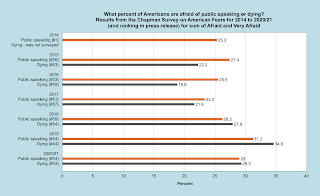Currently PowerPoint is a common visual aid, but before it there were 35mm slides, and before them there were lantern slides. As shown above, an ad on page 12 in the November 28, 1888 issue of the weekly humor magazine Puck (shown above) proclaimed that:
“STEREOPTICONS AND MAGIC LANTERNS Afford the best and cheapest means of Object Teaching for Colleges, Schools and Sunday-schools and are equally applicable for POPULAR ILLUSTRATED LECTURES, which, when well-managed, always PAY WELL as the giving of PUBLIC EXHIBITIONS is a very PROFITABLE BUSINESS especially for a person with small capital.”
But what is a stereopticon? It is a stacked pair of magic lanterns (slide projectors). Look carefully and you can see that is what is shown in the ad. As shown above, they are able to smoothly dissolve from one image to another by rotating a shutter shaped like a propellor with two blades.
Back on November 15, 2012 I had blogged about how Slides were used as visual aids long before PowerPoint. Lantern slides had their heyday from about 1860 to 1960, when 35mm slides took over.
In the late 1950s Polaroid introduced their Polaroid Land Projection Film for making lantern slides quicky. It was discussed by David B. Hayt and John A. Evans in the December 1958 issue of Radiology magazine in an article titled A camera using the Polaroid Land Process for the reproduction of Roentgenograms as transparencies for projection. When I was in graduate school from 1973 to 1977 we sometimes used a Polaroid MP4 copy camera and a roll of their lantern slide film for last-minute production of pairs of 35mm slides. In 1983 Polaroid introduced Polachrome, an instant 35mm slide film.
The image of a Monarch dissolving stereopticon came from page 24 in the 1915 McIntosh Stereopticon Company Catalog found at the Internet Archive.






























